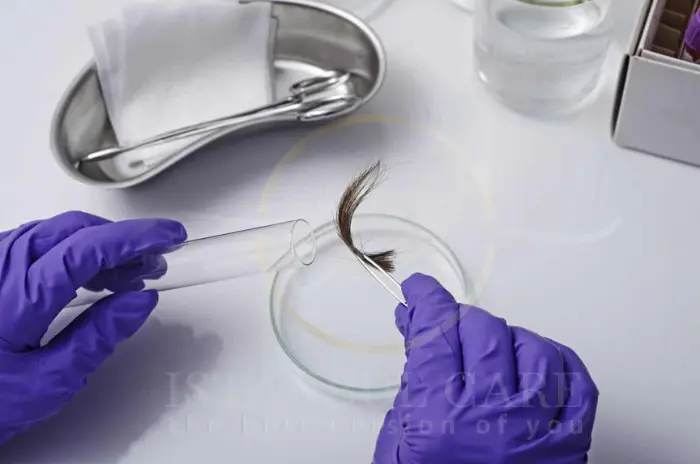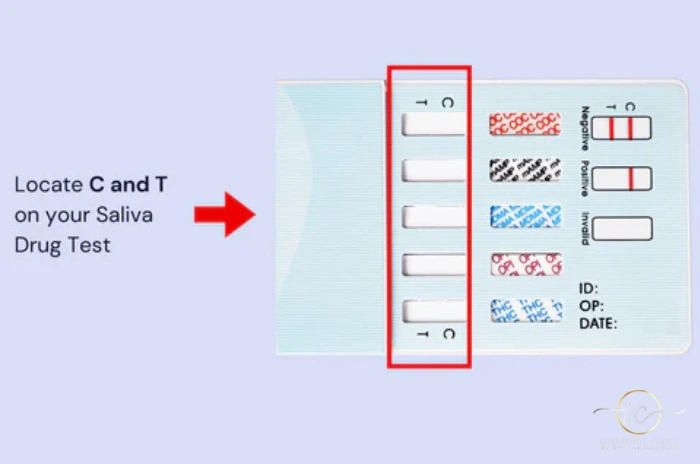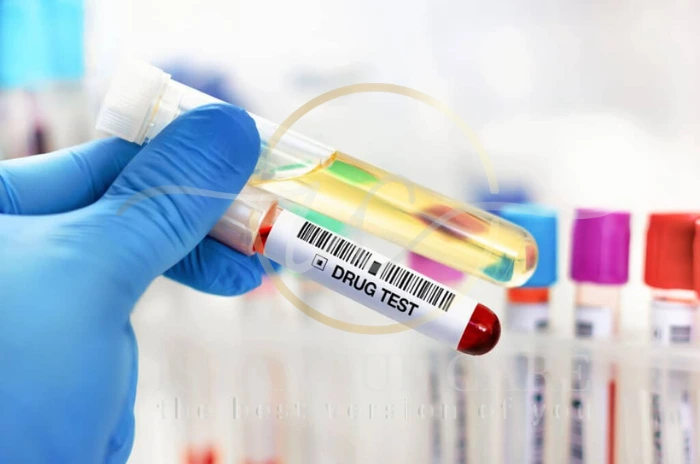Preparing for a hair follicle drug test can be a stressful experience, especially if you’re unsure what to expect. Unlike urine or saliva testing, hair drug testing analyzes a long-term history of drug use, making it more difficult to cheat or mask. Whether you’re facing workplace hair drug testing, a legal requirement, or a pre-employment screening, understanding the facts about hair drug tests and separating them from myths is essential.
In this guide, we’ll explore how the hair follicle drug test works, what it detects, its accuracy, how to prepare, and common misconceptions that can lead you astray.

What is a hair follicle (strand) drug test?
How the hair strand drug test process works
A hair follicle drug test involves collecting a small sample of hair—usually from the scalp—and analyzing it for traces of drug metabolites. These metabolites are deposited into the hair shaft from the bloodstream and can indicate drug use over an extended period.
The process typically begins with sample collection, followed by laboratory testing using ELISA screening and GC/MS confirmation. The sample is not taken from the follicle itself but from the strand close to the scalp.
Which drugs can a hair drug test detect?
Hair drug testing can detect a variety of substances including:
- Amphetamines
- Cocaine
- Marijuana (THC)
- Opiates
- Phencyclidine (PCP)
Some advanced tests may also identify synthetic opioids and benzodiazepines.
Comparison of Drug Testing Methods
| Test Type | Detection Window | Sample Collection | Cheating Difficulty | Use Case | Common in |
|---|---|---|---|---|---|
| Hair Drug Test | Up to 90 days | Hair from scalp or body | Very hard | Long-term use detection | Employment, legal |
| Urine Drug Test | 2–7 days | Urine sample | Moderate | Recent use detection | Workplace, medical |
| Saliva Drug Test | 1–3 days | Saliva swab | Moderate | Immediate use detection | On-site screening |
How accurate is a hair drug test?
ELISA screening vs GC/MS confirmation
Hair follicle test accuracy is high due to its two-step process. First, labs use the Enzyme-Linked Immunosorbent Assay (ELISA) for initial screening. If positive, a more detailed confirmation is conducted using Gas Chromatography-Mass Spectrometry (GC/MS), which nearly eliminates the possibility of false positives.
Factors that affect test accuracy
Accuracy can be affected by:
- Hair treatments like bleaching or dyeing (though not significantly)
- Environmental contamination (ruled out by washing protocols)
- Hair type and color (darker hair may retain more metabolites)
- Amount of drug use and frequency
Why choose hair drug testing?
Uses in employment, legal and medical settings
Hair drug test for employment is commonly used by companies seeking long-term usage patterns. It’s also valuable in child custody cases, probation monitoring, and rehab programs.
Required consent and legal rules
Most countries, including those under Workplace drug testing EU standards, require informed consent before sample collection. In some legal scenarios, refusal to take a hair follicle test may carry consequences.
Hair drug test vs urine drug test
Detection window comparison: 90 days vs a few days
A hair vs urine drug test comparison highlights that urine testing detects recent use (up to 3-7 days), while hair drug testing shows usage within a 90-day window. This makes hair tests suitable for identifying chronic use rather than one-time events.
When one test might be better than the other
Urine tests are better for detecting recent use or impairment, whereas hair drug tests excel at spotting long-term patterns. Legal or corporate policies usually determine which method is used.

Understanding hair drug test results
What a negative result means
A negative result means no drug metabolites were found above the defined cut-off levels, indicating no consistent use during the detection period.
What a positive result means
A positive result shows that one or more drugs were consistently used within the past 90 days. Confirmation tests eliminate false positives.
Inconclusive results and retesting
If results are inconclusive, retesting may be necessary. Labs may request a second sample or use a different method for clarity.
What are the advantages of hair drug testing?
Hard to cheat and repeat testing possible
Because hair drug tests detect embedded metabolites in the hair shaft, they are nearly impossible to cheat. Hair can’t be substituted like urine, and detox methods are largely ineffective.
Comparison with other drug testing methods
Compared to saliva, urine, or blood tests, hair drug testing offers the longest detection window and the most consistent results for chronic drug use.
How much does a hair follicle drug test cost?
At‑home kit vs lab/hospital pricing
Hair follicle drug test costs vary. At-home kits can range from $65 to $150, while lab-based tests (for employment or legal use) often range from $100 to $300.
Who pays for the test—and when?
In Workplace hair drug testing, the employer usually covers the cost. In legal cases, the requesting party or individual under investigation might be responsible.
Insurance coverage for hair drug tests
Insurance rarely covers non‑invasive drug screening like hair testing unless medically necessary. It’s advisable to check with your provider.
What Drugs Can a Hair Follicle Test Detect?
Common Drugs Screened in Hair Tests
Most standard hair drug tests screen for:
- Cocaine
- Opiates
- Marijuana
- Methamphetamines
- Ecstasy (MDMA)
- Benzodiazepines
Can a Hair Test Detect Alcohol or Prescription Medications?
Yes. While alcohol is not typically tested in standard panels, EtG (Ethyl Glucuronide) tests can detect chronic alcohol use. Prescription medications can also be detected if specifically requested.

How to Prepare for a Hair Follicle Drug Test
Can You Pass a Hair Drug Test Naturally?
Time and abstinence are the most effective methods. Once drug use stops, new hair growth should be clean. Detox shampoos and cleansers do not remove drug metabolites from within the hair shaft. It’s important to remember that external cleaning does not impact what’s embedded in the hair. Your best approach is to allow time for clean hair to grow naturally.
Debunking Myths About Shaving or Detoxing
Shaving your head will not help; body hair can be used instead. Detox shampoos only mask external contamination and are ineffective for internal markers. In fact, shaving may raise suspicion and lead to alternative sampling methods. Always assume all hair on the body is viable for testing.
Hair Drug Testing in the Workplace
Why Employers Choose Hair Testing
Employers prefer hair drug testing because it provides a long-term view of an employee’s substance use and is hard to manipulate. It helps organizations ensure safety and reliability in their workforce. Many industries with high safety standards, such as transportation or healthcare, rely on this method.
Employee Rights and Hair Drug Tests
Employees have the right to be informed, give consent, and appeal a positive result. Retesting is often allowed if results are contested. Additionally, workers may request access to their results and challenge them through an independent test. Knowing your rights helps ensure fair testing practices.
How far back can a hair test look?
Hair growth explains 90‑day window
Hair grows approximately 0.5 inches per month. A 1.5-inch sample reflects about 90 days of drug use history. Longer samples can detect even older use. However, detection periods can vary depending on the rate of individual hair growth. Scalp hair is preferred, but body hair may reflect an even longer time span.
Scientific Basis of Hair Drug Testing
Understanding the Hair Testing Process
Drug metabolites in hair are carried through blood vessels to hair follicles and incorporated into the growing hair strand. The lab analyzes this section for presence and concentration of drugs. This internal integration ensures that external contamination plays a minimal role in test outcomes. The process includes a rigorous wash protocol to eliminate surface residue.
Detection Windows for Different Substances
Different substances metabolize differently. For instance, cocaine is rapidly absorbed into the hair, while THC is less predictable but still traceable. Other substances like opiates or methamphetamines also show up reliably. Frequency of use and dosage can influence how strongly substances are detected.
Speak with our expert Hair Transplantation specialists

Speak with our expert Hair Transplantation specialists
We’re ready to answer your questions
FAQs for How to Prepare for a Hair Follicle Drug Test Myths vs Facts
It tests hair strands for embedded drug metabolites accumulated over time.
Typically up to 90 days depending on hair length.
It detects cocaine, opiates, amphetamines, marijuana, PCP, and more.
They are highly accurate when GC/MS confirmation is used; hair treatments and color may influence results.
Because it’s harder to cheat and reveals long-term use patterns.
No, body hair will be used, and shampoos can’t remove internal drug markers.
Positive means drug use, negative means no detection, and inconclusive may require retesting.
It costs $65–$300 depending on the type; employers often cover it in workplace settings.

